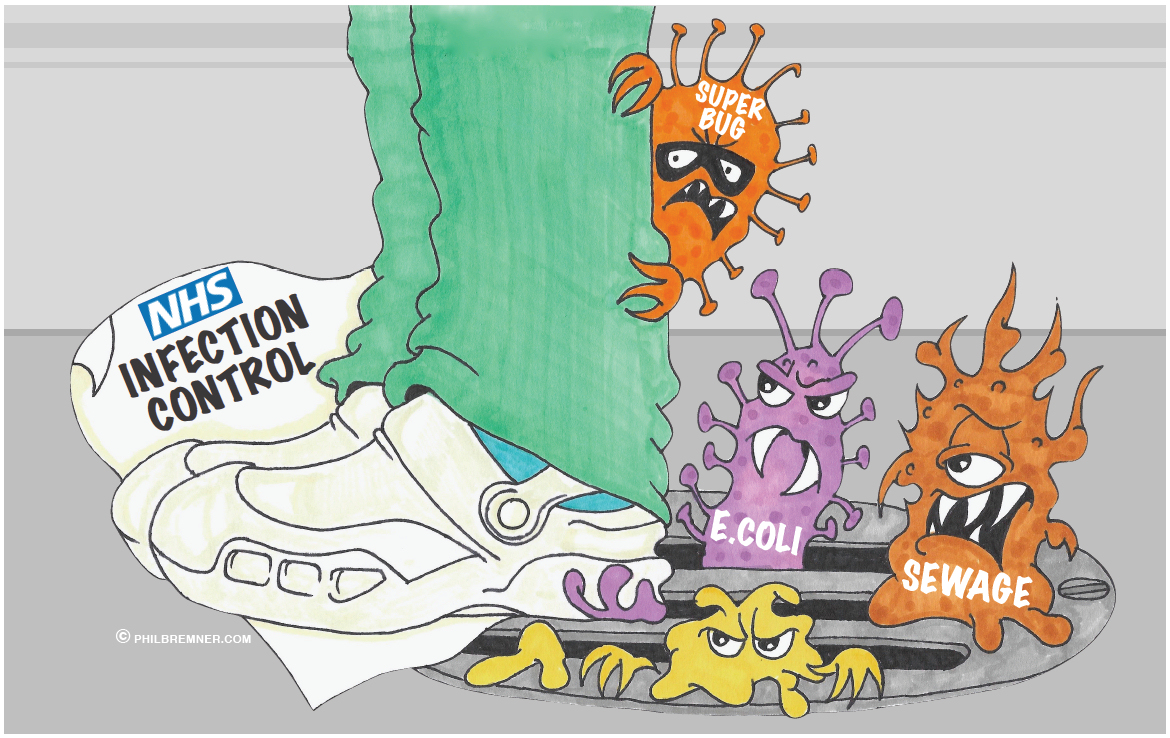Reverse Thinking Cracks the Blocked Sewer Stack Problem for the NHS
9 Mar 2017
Radio Data Networks leads the battle in combatting infections from blocked sewers and sewer stacks in MHS Hospitals
In the battle against infection it is of paramount importance to detect blockages in drains, sewers and stacks before a spill occurs causing contamination and encouraging the spread of diseases around Hospitals. In the absence of X-ray vision within the drains, unfortunately the first time a blockage is often reported is when it is too late and sewage has already backed up and started to spill out of a drain, toilet, shower or manhole into a walkway. As anybody in the health sector will know deep cleaning following such as spill can be costly, running into many tens of thousands of pounds, plus on top of this is the untold cost of the cancelations, ward closures, treating infections and the consequential impact on performance targets. In contrast if a blockage is detected early is can cost just a few tens of pounds to clear
After gaining a reputation for detecting blockages in the Water Utilities’ sewer networks, Radio Data Networks were approached between 2015 and 2016 by a number of Hospital Trusts to apply its technology to the healthcare sector. However, upon investigation it was found that sewers in hospitals posed some unique challenge as they are a mixture of horizontal pipes, drains and vertical stacks, many of which were found to be totally sealed and inaccessible. Further, there was the issue of communications, ease of adoption and installation. In spite of all the hype concerning IoT (Internet of Things) nobody was in favour of alarms being delivered to a cloud, instead all wanted to use the existing infrastructure – the Building Management System.
The ultimate solution became a hybrid of three distinct technologies for detection and importantly a single common platform for delivery, called a Gateway. For blockages in horizontal drains/ sewers dielectric high level alarm transducer called the BDT was deployed with great success. For accessible vertical stacks a battery powered wireless pressure transducer system was developed that triggered on the build up of pressure and converted the pressure change into an alarm at the Gateway.
The big challenge however was the sealed sewer runs without access chambers. These took some really radical out of the box thinking, with the ultimate solution being a micro-power no-flow detector (FDT Flow Detection Transducer) that could be retro fitted at the outfall at the point of discharge and used to raise an alarm if no flow was detected in a given time period. Again like the other solutions this again was wireless and battery powered to obviate the need and cost associated with running cables.
In all cases, feedback from deployments have been very positive, with systems installed in over 20 Hospitals and Mental Healthcare institutions. In particular one PFI holder recently reported that the no-flow stack monitoring system had been used in anger twice within the first 6-weeks of installation and had such effectively paid for itself more than twice over in that period.
In summary, early detection is key to prevent blockages from becoming disasters. The technology we have developed is unique and is able to interface and raise alarms directly via a hospitals existing BMS system.
Radio Data Networks Limited
Website
T: (0)1279 600 440
The Innovation Farm
Sawbridgeworth Road
Little Hallingbury
CM22 7QU
Nr Bishops Stortford, Hertfordshire
United Kingdom


